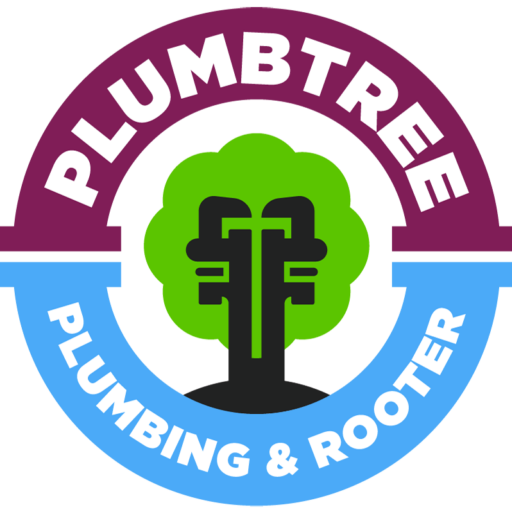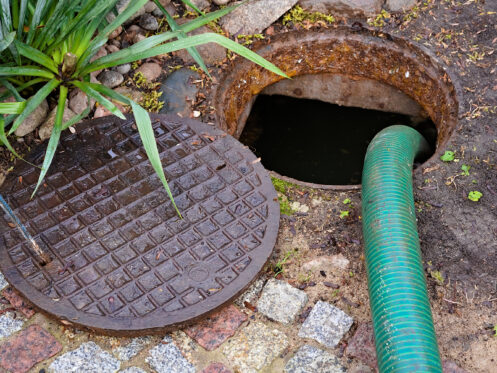Although out of sight and often out of mind, the sewer line traveling from your home to the municipal sewer main has a major impact on the health and habitability of your living environment. If this line ever develops a blockage, it could send wastewater and solid waste back into the building. To prevent whole-house backups and other sewer problems, homeowners in San Jose, CA are advised to clean their sewer lines once every 18 to 22 months. However, the ideal schedule for your household could prove quite different. Read on to find out why.
General Recommendations for Sewer Line Cleaning and How They Apply to You
If you search the Internet for advice on sewer line cleaning, you’ll get a surprisingly diverse range of recommendations. In general, homeowners shouldn’t wait more than two years before scheduling this service. If you have a large and busy household, lots of living elements in your backyard, or other factors that could lead to sewer line problems, having this all-important plumbing feature cleaned every year and a half is likely best.
Despite your best efforts to avoid putting the wrong things down your drains, professional cleaning is absolutely essential for keeping this line free of blockages and moving like it should. Over time, build-ups of soap scum, grease, body oils, human waste, and other organic materials can gradually diminish the interior diameter of this pipe. Worse still, small, non-degradeable items like “flushable” wipes, cotton swabs, and feminine hygiene products can get snagged on either built-up waste or worn, rough areas of the pipe itself. When this occurs, there’s even less area for effluence to move through, and there’s an increasing likelihood of whole-house back-ups.
Hydraulic cleaning methods such as hydro-jetting use the velocity of water to power these build-ups off. Hydro-steaming uses high-pressured steam and high heat to accomplish similar results, and with less added wear to aging plumbing. There are even manual sewer line cleaning techniques that plumbers can use in instances in which blockages or impending blockages are severe. With the right cleaning methods, the performance of sewer lines is vastly improved, and homeowners don’t have to contend with slow-moving drains, random bubbling or gurgling sounds, or foul and pervasive drain odors.
Factors That Make It Necessary to Clean Your Sewer Line More Often
Using “flushable” moist wipes is one of the most common causes of sewer line problems in residential plumbing. Although these products are marketed as being safe to flush, they really aren’t. Unlike toilet paper which begins breaking down as soon as it’s submerged in water, “flushable” wipes can take weeks or even months to disintegrate completely. In fact, some brands are known to remain intact for years in the right conditions. These products are reinforced with petroleum-based polymers, and they’re prone to attracting grease, other fats, and other “flushable” wipes. When they do, they form large, solid accumulations known as fatbergs and smallbergs. The smallest of these formations clog residential plumbing systems, and larger fatbergs create major obstructions in municipal sewer systems.
If you’ve been using “flushable” wipes in your household, you can protect your plumbing system by throwing these products away rather than sending them down your commodes. Moreover, scheduling a sewer line cleaning right after making this transition is advisable for clearing existing or potential clogs out.
Frequent sewer line cleanings are also recommended for homes with old, vitrified clay pipes or aging PVC or ductile iron pipes at their exterior. Vitrified clay pipes are highly permeable, especially as they experience age-related wear and develop tiny cracks at their exterior. Nearby tree roots and weeds take advantage of these openings. Once they find their way inside, they often experience exponential growth due to high levels of moisture and nutrients. PVC pipes and ductile iron pipes experience similar decreases in integrity over time that also make these structures appealing to underground growths. With the right sewer line cleaning techniques, plumbers can break invasive root systems up before they cause major blockages and whole-house backups.
Recurring clogs are another indication of the need for more frequent sewer line cleaning. Although you might dispose of your cooking oils and other fats in the trash, even slight residues of grease on your cookware and other dishes can have an impact on your sewer line over time. These residues exit home plumbing systems along with hot water from dishwashers and sinks, but they tend to cool down long before they reach the sewer main. As their temperature drops, these fats harden and adhere to the interior of sewer lines. If you’re feeding lots of people and routinely cook bacon, ground beef, or other fatty foods, you may have a substantial coating of grease at the interior of this pipe within just one year.
Another factor that can lead to sewer line blockages is excessively hard water. Calcium, magnesium, and other mineral deposits will gradually limit the amount of space that your wastewater moves through. If you have untreated hard water in your home, ask your plumber to help you set the right sewer line cleaning schedule.
Accidental Flushes and the Need for Preventative Sewer Line Cleaning
It’s surprisingly easy to flush down solid, large-sized, or non-degradable items without meaning to. Countless consumers have accidentally flushed toothbrushes, toys, sanitary napkins, paper towels, and more. Although these things might clear the commode, this doesn’t mean that they’ll clear your plumbing system entirely. While a whole-house backup might not occur right away, it could be looming just around the corner. Even if you’ve had your sewer line professionally cleaned within the last year or so, scheduling a preventative cleaning could be necessary for protecting your home and household. This is especially true if you start hearing bubbling or gurgling sounds from your drains shortly after someone has unintentionally flushed the wrong item.
Sewer Line Cleaning and Your Home Insurance Plan
Standard home insurance plans don’t generally cover sewer line repairs unless they’re the result of sudden and accidental events. However, it is possible to add comprehensive sewer line protection to your coverage with one or more relatively inexpensive riders or endorsements.
No matter how inclusive your policy’s sewer line protection is, it’s important to remember that this is a mutually binding agreement. As such, there are likely stipulations in your policy concerning the frequency of professional sewer line cleaning. To remain compliant and ensure that your coverage isn’t voided due to substandard maintenance or general neglect, be sure to read through your plan documents carefully. You may find that your insurer has a mandatory schedule for this service.
Getting a Needs-Specific Recommendation for Sewer Line Cleaning
At the end of the day, there are multiple factors that determine the right schedule for sewer line cleaning for each home. Your landscaping, grading, household size, and more, all matter. To make sure that your current schedule is on par with your needs, ask for a property and household-specific recommendation during your next whole-house plumbing inspection or plumbing repair service.
Residents of San Jose, CA can turn to us for superior plumbing installation, maintenance, and repair services. We offer hydro-jetting, drain cleaning, drain repairs, leak detection, and more. We also provide storage-based and tankless water heaters, gas services, and water services. To schedule an appointment, contact Plumbtree Plumbing & Rooter now.

